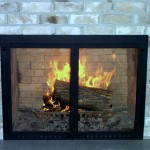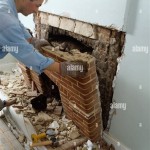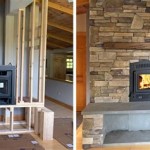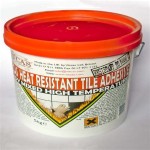The Allure of Fireplace Smell Candles: A Deep Dive
Fireplace smell candles have become a popular choice for individuals seeking to evoke feelings of warmth, comfort, and nostalgia within their homes. These scented candles aim to replicate the complex and comforting aroma of a crackling fireplace, offering a sensory experience reminiscent of cozy winter evenings and rustic settings. The popularity of these candles hinges on their ability to transport individuals to a more peaceful and relaxing state of mind, even in the absence of a real wood-burning fireplace.
The market for fireplace smell candles is diverse, with numerous brands and variations available. These candles differ in their composition, scent profiles, and burning characteristics. Some candles focus on recreating the smoky elements of a fireplace, while others prioritize the woody and earthy notes often associated with burning wood. Understanding the nuances of these variations is crucial for consumers seeking a candle that aligns with their specific preferences.
The creation of a convincing fireplace smell candle is a complex process that involves a careful blend of fragrance oils. Perfumers and candle makers meticulously select and combine various aroma compounds to achieve the desired scent profile. The goal is to create a fragrance that is both realistic and appealing, avoiding overly harsh or artificial notes. The quality of the fragrance oils used is a significant factor in determining the overall quality and authenticity of the candle's scent.
Understanding the Key Scent Components
Replicating the smell of a fireplace requires capturing a complex blend of scents, each contributing to the overall sensory experience. Key components often used in fireplace smell candles include smoky notes, woody notes, and subtle hints of spices or resins. Each of these components plays a distinct role in recreating the desired aroma.
Smoky notes are essential for capturing the essence of a fireplace. These notes are typically derived from ingredients that mimic the aroma of burning wood or charcoal. Common ingredients used to create smoky notes include cade oil, birch tar oil, and various smoky accords created by perfumers. The intensity of the smoky note can vary depending on the desired effect, ranging from a subtle hint of smoke to a more pronounced and robust aroma.
Woody notes provide the foundation for the fireplace smell, contributing to the overall warmth and earthiness of the scent. Common woody notes include cedarwood, sandalwood, birch, and pine. Each of these woods has a unique aroma profile, adding depth and complexity to the overall fragrance. The choice of woody notes will influence the character of the fireplace scent, contributing to its perceived warmth and realism.
Subtle hints of spices or resins can further enhance the complexity and appeal of fireplace smell candles. These notes add depth and warmth to the fragrance, creating a more nuanced and inviting aroma. Common spice notes include clove, cinnamon, and nutmeg, while resin notes include frankincense, myrrh, and amber. These ingredients contribute to the overall sense of comfort and nostalgia associated with a fireplace.
The Role of Wax and Wick in Scent Diffusion
The type of wax used in a candle significantly impacts its ability to diffuse scent. Different waxes have different melting points and scent throw capabilities, influencing the overall fragrance experience. Common waxes used in candle making include paraffin wax, soy wax, beeswax, and coconut wax. Each of these waxes has its own advantages and disadvantages in terms of scent diffusion and burning characteristics.
Paraffin wax is a traditional choice for candle making, known for its excellent scent throw and ability to hold fragrance oils. However, paraffin wax is derived from petroleum, which may be a concern for some consumers. Soy wax is a natural alternative made from soybeans, offering a cleaner burn and a more sustainable option. Soy wax typically has a softer scent throw compared to paraffin wax, but it is often preferred for its eco-friendliness.
Beeswax is another natural option, prized for its clean burn and subtle honey-like aroma. Beeswax candles are often more expensive than paraffin or soy wax candles, but they are considered a premium option. Coconut wax is a newer alternative that offers excellent scent throw and a clean burn. Coconut wax is made from coconuts, making it a sustainable and renewable resource.
The wick also plays a crucial role in scent diffusion. The wick's size and material influence the burn rate and the amount of fragrance released into the air. Cotton wicks are the most common type of wick, but wooden wicks are also gaining popularity. Wooden wicks create a crackling sound similar to a real fireplace, enhancing the overall sensory experience.
Evaluating the Quality of Fireplace Smell Candles
Determining the quality of a fireplace smell candle involves evaluating various factors, including the quality of the fragrance oils, the type of wax used, the wick type, and the overall craftsmanship of the candle. A high-quality candle will have a well-balanced scent, a clean burn, and a long burn time.
The quality of the fragrance oils is paramount. Candles made with high-quality fragrance oils will have a more authentic and long-lasting scent. Look for candles that use natural or premium fragrance oils, and avoid candles with overly synthetic or artificial scents. Reading reviews and researching the brand can provide insights into the quality of the fragrance oils used.
The type of wax used also influences the quality of the candle. Soy wax, beeswax, and coconut wax are generally considered higher-quality options compared to paraffin wax, due to their cleaner burn and sustainable sourcing. However, paraffin wax can still be a viable option if the candle is made with high-quality fragrance oils and a well-designed wick.
The wick should be properly sized for the candle to ensure a clean and even burn. A wick that is too small will result in tunneling, where the wax only melts in the center of the candle. A wick that is too large will produce excessive smoke and soot. The wick material also influences the burn. Cotton wicks are the most common, but wooden wicks offer a unique crackling sound that enhances the fireplace experience.
The overall craftsmanship of the candle is also important. The candle should be well-poured and free of imperfections. The jar or container should be sturdy and heat-resistant. The label should be clear and informative, providing information about the fragrance notes and burn time.
Ultimately, the best fireplace smell candle is a matter of personal preference. Some individuals may prefer a strong smoky scent, while others may prefer a more subtle and woody aroma. Experimenting with different brands and scent profiles is the best way to find a candle that meets individual needs and preferences.

Replica By The Fireplace Scented Candle Maison Margiela Sephora

20 Fireplace Candles That Smell Like The Real Deal

Firewood Ling Wood Fireplace Soy Wax Candle In Amber Jar With Black Lid 9 Oz

Fireplace Scented Jar Candle

Firewood Ling Wood Burning Fireplace Soy Wax Candle In

Replica By The Fireplace Scented Candle Maison Margiela Sephora

The 5 Best Candles That Smell Like Campfire Candle Junkies

Replica Mini By The Fireplace Scented Candle Maison Margiela Sephora

11 Fireplace Candles That Smell Like The Real Deal

Free Well Hung Fireplace Holiday Candle Funny Fire Place The Daddy
Related Posts








